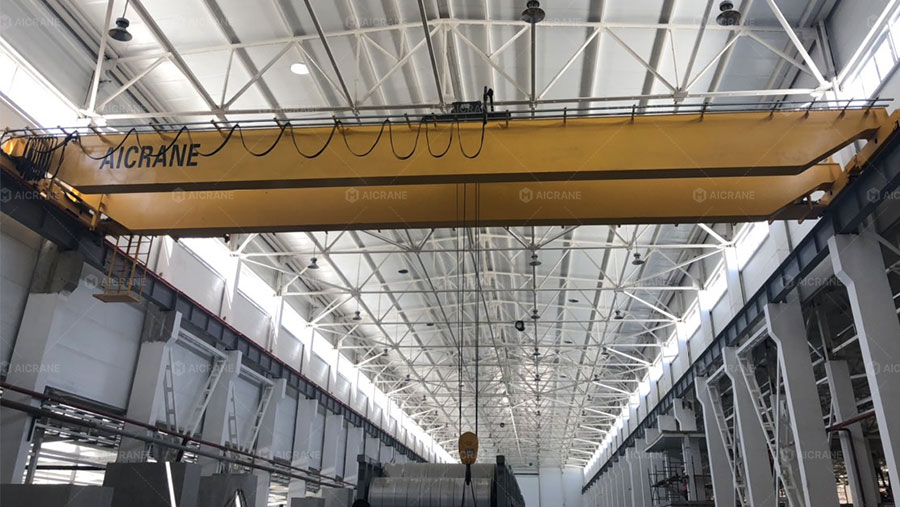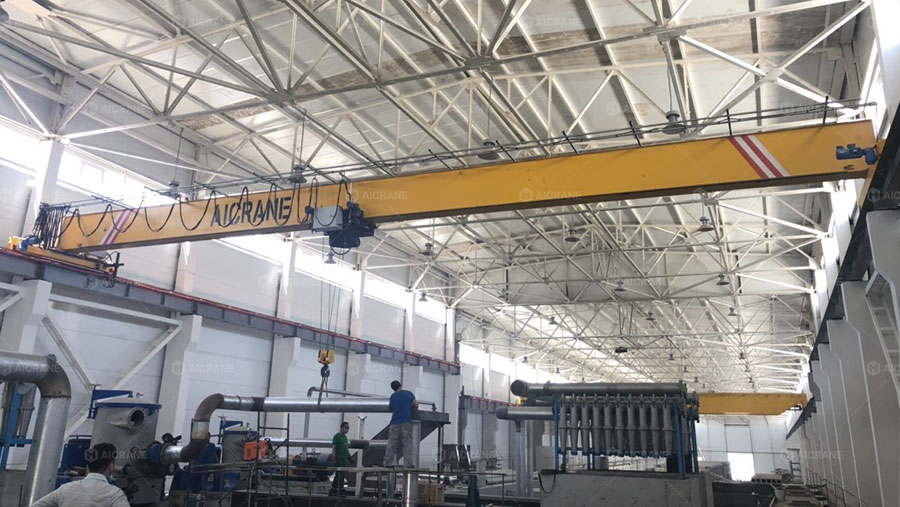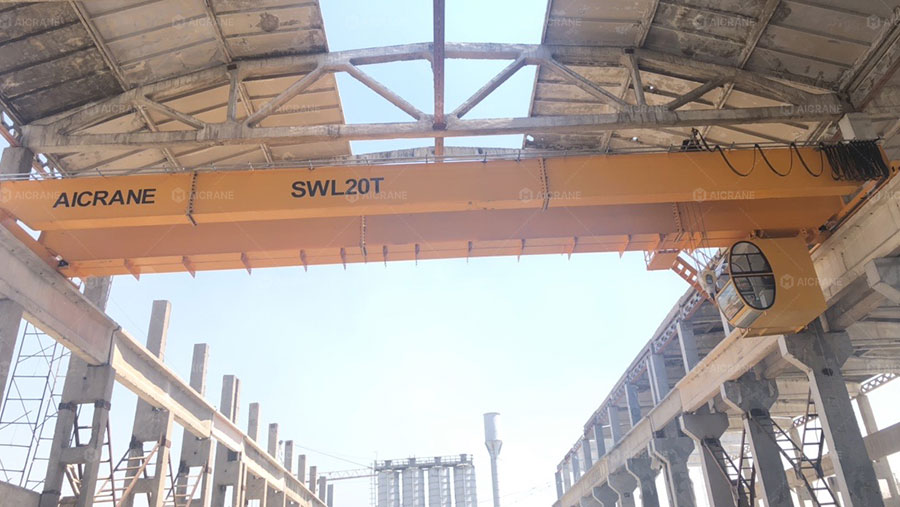When selecting an overhead crane system for industrial operations, one of the most crucial considerations is load capacity. The ability of a crane to lift and move a specific weight safely and efficiently defines its suitability for a given application. Among the most common overhead crane designs are single girder and double girder cranes, each with unique structural characteristics and load-handling capabilities. In this article, we explore the load capacity comparison between these two crane types, analyzing their design, performance, and appropriate applications.

Understanding the Basics: Single vs. Double Girder Cranes
Before diving into load capacity differences, it’s important to understand the core structural distinction between these crane types:
-
Single Girder Cranes: These single girder cranes consist of a single bridge beam supported by end trucks on either side. The hoist is typically mounted under the bridge girder and travels along the bottom flange of the beam.
-
Double Girder Cranes: These double girder overhead cranes have two parallel bridge beams, with the hoist and trolley traveling on rails mounted on top of the girders. This design offers greater structural integrity and more space for load lifting.
The number of girders directly affects the load capacity, span capability, and lifting height, making it a critical factor in crane selection.
Load Capacity of Single Girder Cranes
Single girder cranes are designed for light to medium-duty applications. In general, their load capacity typically ranges from 1 ton up to 20 tons. Some custom designs may extend this range slightly, but standard applications rarely exceed this threshold due to structural and safety constraints.

Key Characteristics Affecting Capacity:
-
Beam Design: A single beam overhead crane has limited strength due to its single-point load-bearing structure. The bending stress is concentrated along one beam, reducing the potential for higher capacities.
-
Hoist Configuration: Because the hoist runs under the beam (underslung), the vertical space is limited. This design inherently limits the weight and size of the hoist that can be used.
-
Runway Support: The runway beams or columns also play a role. For heavier loads, the stress on support structures increases, and single girder systems can become inefficient or unsafe.
-
Crane Span: With increasing span, deflection becomes a challenge. Single girders are typically suitable for spans up to around 20 to 30 meters, but higher spans may compromise stability under heavy loads.
Load Capacity of Double Girder Cranes
Double girder cranes are engineered for medium to heavy-duty and severe service conditions. Their load capacity commonly ranges from 5 tons to over 500 tons, depending on design specifications. They are the go-to option for heavy lifting in steel mills, power plants, shipyards, and other high-capacity operations.

Key Characteristics Affecting Capacity:
-
Dual Beam Design: The two girders distribute the load more evenly, allowing for much higher weight capacities. The added rigidity reduces bending and increases operational lifespan under heavy loads.
-
Top-Running Hoist: The hoist travels on rails atop the girders, allowing for the use of larger and more powerful hoisting mechanisms.
-
Increased Lifting Height: Since the hoist sits on top, double girder eot cranes provide more lifting height. This is essential in facilities where vertical space is utilized for storage or maneuvering.
-
Custom Engineering: Double girder systems are often custom-engineered for specific heavy-lifting applications. They can incorporate additional safety systems, walkways, and maintenance platforms.
Why Load Capacity Matters in Crane Selection
Load capacity is not just about how much weight a crane can lift—it impacts every aspect of crane design and facility operation:
-
Safety: Overloading a crane beyond its rated capacity can lead to equipment failure, workplace injuries, and fatal accidents. Choosing a crane with appropriate capacity ensures safe operations.
-
Efficiency: A crane that operates near or at full capacity consistently may experience wear and tear faster. Choosing a crane with extra capacity ensures smooth and prolonged operation.
-
Cost: While double girder cranes offer more capacity, they come with higher costs in terms of material, design, and installation. Selecting the appropriate crane avoids under- or over-investment.
Comparison Table: Load Capacity Overview
| Feature | Single Girder Crane | Double Girder Crane |
|---|---|---|
| Typical Load Capacity | 1 – 20 tons | 5 – 500+ tons |
| Design | One main bridge girder | Two bridge girders |
| Hoist Placement | Underslung or bottom-running | Top-running |
| Span Capability | Up to ~30 meters | Up to ~50 meters or more |
| Lifting Height | Lower (limited by beam height) | Higher (hoist above girder) |
| Installation Cost | Lower | Higher |
| Maintenance | Easier and more economical | More complex |
| Common Applications | Warehouses, workshops, light duty | Heavy manufacturing, power plants |
When to Choose Single vs. Double Girder Based on Capacity
✅ Choose Single Girder Crane If:
-
You need to lift loads under 20 tons.
-
The application is light to moderate, such as assembly lines, maintenance bays, or small workshops.
-
Cost and installation time are significant concerns.
-
The lifting height and span requirements are moderate.
✅ Choose Double Girder Crane If:
-
You require lifting heavy loads exceeding 20 tons regularly.
-
Your facility handles large components like turbines, steel coils, molds, or ship parts.
-
You need greater lifting height or span.
-
Your application involves frequent, continuous, or severe duty cycles.
Real-World Examples
-
A steel processing facility using a double girder overhead crane 50 ton to move hot steel billets could not operate with a single girder crane due to load and temperature demands.
-
A machining workshop with a 10-ton lifting requirement opted for a single girder crane to reduce cost and floor space usage.
Conclusion
The load capacity of a crane is one of the most important factors in choosing between a single girder and a double girder crane. While single girder cranes are ideal for light to moderate lifting tasks, double girder cranes are better suited for heavy-duty industrial operations. Understanding the load requirements, application environment, and structural limitations of each crane type ensures that businesses make informed, cost-effective, and safe decisions.
When in doubt, consult with a professional crane supplier or engineer to assess your operational needs and determine the best solution. Investing in the right crane not only maximizes productivity but also enhances safety and long-term performance.
